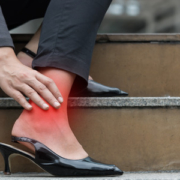How Are Feet Connected to the Heart?
There is never a dull moment in the world of medicine! With how expansive the realm of illnesses, diseases, and conditions can be, it makes sense when you think about how symptoms can overlap between different areas of medicine.
The connections between the world of cardiology and podiatry can be surprising to most people. Depending on what foot issues your podiatrist is addressing, this may also clue you in to what could be beneficial to bring up with a cardiologist. In a recent interview, a podiatrist working in a hospital with a neighboring cardiology department noted that over 80% of their patients also saw a cardiologist. This podiatrist, however, specialized in the types of issues that most commonly overlap with cardiology: non-healing wounds, patients at high risk of amputation, circulatory disorders, and diabetic patients.
Not every podiatry patient will need to see a cardiologist, but there are a few tell-tale signs that you may benefit from a trip to the cardiologist in addition to seeing your podiatrist:
- Are your feet regularly puffy or swollen, even slightly?
- Have you ever had a foot or ankle injury that took an excessive amount of time to heal?
- Do you ever struggle with healing from ulcers or even just blisters on your feet?
- Are you at risk of developing diabetes, or already have diabetes?
- Have you developed any other conditions with a high instance of comorbidity, like congestive heart failure, hypertension, nerve disease, or artery disease?
It can be difficult to navigate when and where it’s appropriate to bring up issues you’re unsure are worth mentioning. As it turns out, Dr. Lilly Khavari at Carrollton Foot Center encourages her patients to bring up any and every change they’ve noticed when it comes to foot and ankle health. Call us today at 469-998-3668 or visit our location in Carrollton, Texas serving Denton, Dallas, and Collin County.





